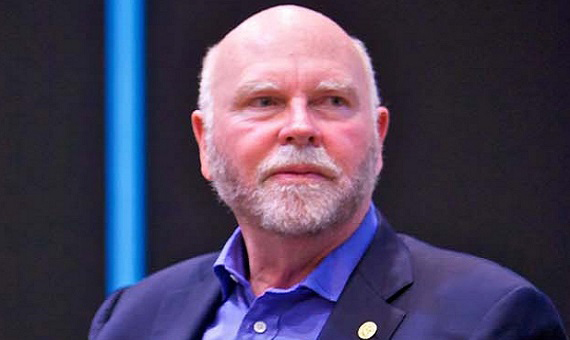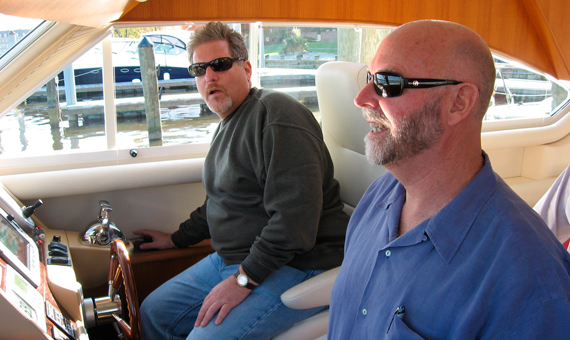It’s not very usual for biologists to own luxury yachts almost 30 metres long, and for those who have them, it’s not common to dedicate them to collecting samples of marine microbes with a view to having their genomes sequenced. But John Craig Venter (Salt Lake City, USA, October 14, 1946) is not your usual biologist. When in 2004 he undertook a scientific expedition around the world aboard his sailboat Sorcerer II, he didn’t do so to emulate Charles Darwin in the HMS Beagle, but rather to surpass him, to “contextualize everything that Darwin missed,” according to what Venter told Wired in 2004. And maybe this example serves to illustrate what it is that some praise and others criticize in the scientist and entrepreneur who is currently turning 70: ambitions so lofty they can only be reached on the stilts of an equally elevated ego.

Rebellion is not normally the inheritance of the intelligent, but perhaps intelligence is the salvation of the rebellious. For Venter, his IQ of 142 allowed him to spend more time surfing than studying during his childhood in California, without fear of harming his future. And being drafted into a war –the one in Vietnam– which he opposed, allowed him to voluntarily choose his role in it, that of health. From those terrible years at the University of Death, as he defined it in his autobiography A Life Decoded (Viking, 2007), comes the story of a suicide attempt by swimming out to sea, a story that feeds his legend.
Venter began to earn a reputation as the bad boy of molecular biology during his initial period at the National Institutes of Health (NIH). While there, he perfected a technique called Expressed Sequence Tags (EST) that has since been employed by thousands of researchers around the world, and which allows them to obtain and store copies for study of all the active genes in a cell. That first achievement revealed the direction that Venter’s career would follow – the application of groundbreaking techniques, often already existing but underused, that propel great leaps forward at the frontiers of biology. But it was also his first scandal when it was learned that Venter and the NIH were attempting to patent the genes identified by the EST.
Venter vs. the discoverer of DNA
While the protests ruined the aspiration to patent genes, Venter became embroiled in a new dispute with the scientific establishment when the technique that he proposed for the Human Genome Project was rejected. Instead of trying to sequence long DNA strands of chromosomes by moving over them gingerly, step by step, as had hitherto been done, Venter proposed a more explosive option: smashing the genome into countless small pieces and sending them into the air, reading them, and then letting computers glue the pieces of the vase back together. James Watson, co-discoverer of the structure of DNA, dismissed the technique, suggesting that it belonged to monkeys.

Clearly, Venter did not try to be particularly cordial. When he founded the company Celera Genomics to sequence the human genome on its own, thereby competing with the public project, he recommended that those responsible for the latter should devote their efforts to another organism, more specifically, the mouse. It is said that Watson came to compare him to Hitler, but Venter’s ego and ambition had solid foundations. The shotgun sequencing technique, which he did not invent but rather optimized, managed to finish the race to map the human genome at the same time as the public project, but the latter was forced to redouble its efforts so as not to be defeated by the uncomfortable competition from Venter.
Venter’s victory opened the door to everything else: public notoriety, respect from his colleagues, a place on the lists of the most influential people, new businesses, money and, of course, the yacht. The Global Ocean Sampling Expedition, completed in 2006, was one more piece in the grand scheme that Venter is currently working on. Sequencing the biodiversity of the oceans is itself a target of Darwinian proportions; however, it is not the final goal, but rather a milestone that extends the catalogue of microbes available to be converted into the factories of the future: modified microorganisms that produce drugs or fuel, or are responsible for collecting the garbage that we spread around the planet.
Objective: create synthetic life
But beyond the customized microbes, there is still a higher purpose: Venter yearns to become the first human to create synthetic life. This was described in his book: “I want to move away from the coast into uncharted waters, into a new phase of evolution, the day when one species based on DNA can sit in front of a computer to design another.” In March 2016, he published his latest conquest to date, creating a minimal synthetic genome able to operate a cell with only 473 genes.
In person, Venter seems affable, though distant. His apparent attempt to be pleasant produces the feeling of hiding a hint of coldness, which is revealed when he reacts harshly to questions with intent, those that a journalist is required to ask. But without doubt Venter knows that it is not only science that interests him. At the end of the day, he wanted it this way: Venter did not bequeath to humanity just any genome, but his own genome.
As if following the conventions in the “know thyself” field, his autobiography is sprinkled with annotations explaining aspects of his life and personality from the perspective of his genes. “I want to find out if a decoded life is really a life understood,” he wrote. “New interpretations of Craig Venter, based on my DNA, will continue to be made long after life has left my body. I have no other choice but to leave the ultimate interpretation to the reader and to History.” Like that, with a capital H.
By Javier Yanes for Ventana al Conocimiento
Comments on this publication